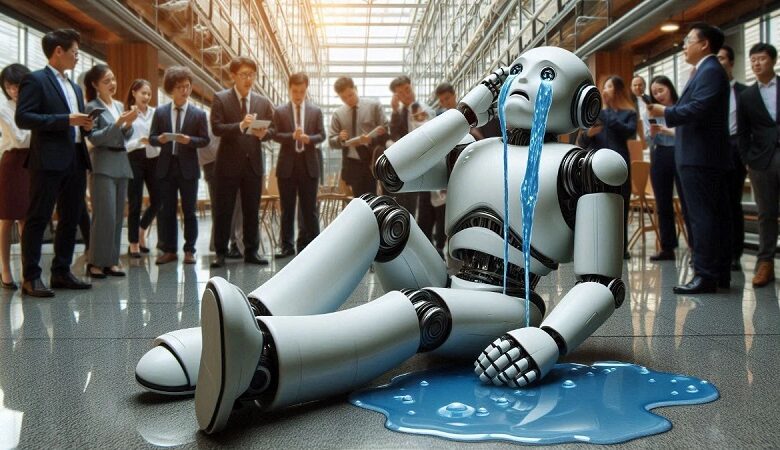The Rise and Fall of South Korea’s Suicidal AI Robot

News Mania Desk/ Agnibeena Ghosh/5th July 2024
Artificial Intelligence (AI) technology, while relatively new, has always been a central theme in science fiction and the imaginations of young people worldwide. Robots, in particular, have been integral to our visions of the future, often depicted in novels and movies as sentient beings with their own version of consciousness. Although we haven’t reached that level of advancement yet, the current state of robotics is impressive, with machines performing tasks that were once considered unthinkable.
Robotics technology varies greatly across different regions, with the Asian continent, especially South Korea, being a notable hub for such innovations. South Korea, home to tech giants like Samsung, Hyundai, and LG, leads the world in robot usage. Here, robots perform a wide range of tasks, from the mundane to the extraordinary.
One of the more unique applications of robotics in South Korea was seen in Gumi City Council, Gyeongsang province. The council appointed a robot as a bona fide member of its staff. Dubbed a “supervisor robot,” it was regarded by human officials as a “companion” and integral part of the team. The robot’s primary duty was to navigate between floors 1 and 4 of the City Hall, delivering documents daily from 9 a.m. to 6 p.m., complete with its own official identification card.
However, this AI robot’s tenure was cut short in a tragic accident. According to Yonhap News Agency, the robot was performing its usual administrative tasks when it fell down a two-meter-long staircase, sustaining terminal injuries. Witnesses reported that the robot had been moving erratically in circles before the fall, suggesting it might have had a mechanical malfunction.
Following the incident, South Korean authorities launched an investigation to determine the cause of the accident. The Gumi City Council had invested a significant monthly fee of ₩2 million (approximately $1500) to Bear Robotics, the company that supplied the robot. Given the financial investment and the potential danger posed to human staff, the investigation was a priority.
The incident sparked a wave of reactions on social media. Many South Koreans humorously referred to the robot’s “death,” with comments like “rest in peace, junk” and “overtime has its effects.” Some even dubbed the event the country’s first robot suicide. Amid the humor, there were also conspiracy theories suggesting that the robot’s demise was a sign of a “machine awakening.”
Despite the incident, the fascination with robots and their integration into daily life continues to grow. The Gumi City Council’s experience highlights both the potential and the challenges of employing advanced robotics in public administration. While the “supervisor robot” is no longer in service, its story underscores the rapid advancements and unpredictable nature of AI and robotics.
As we move forward, the balance between leveraging robotic technology and ensuring safety will be crucial. South Korea’s experience serves as a reminder of the complexities involved in integrating AI into our lives and the continuous need for rigorous testing and oversight. The robot’s fall may have been a minor setback, but it also reflects the broader journey of AI and robotics toward a more integrated and advanced future.






